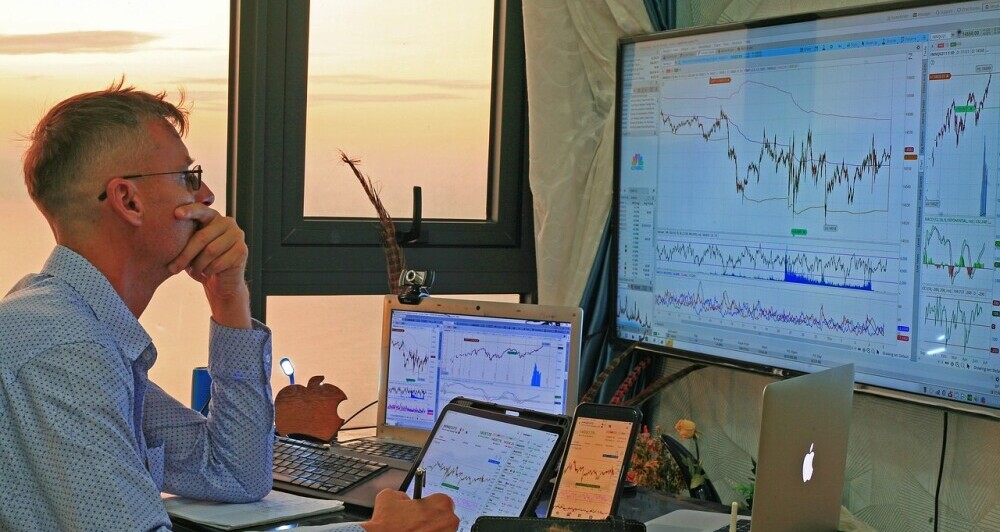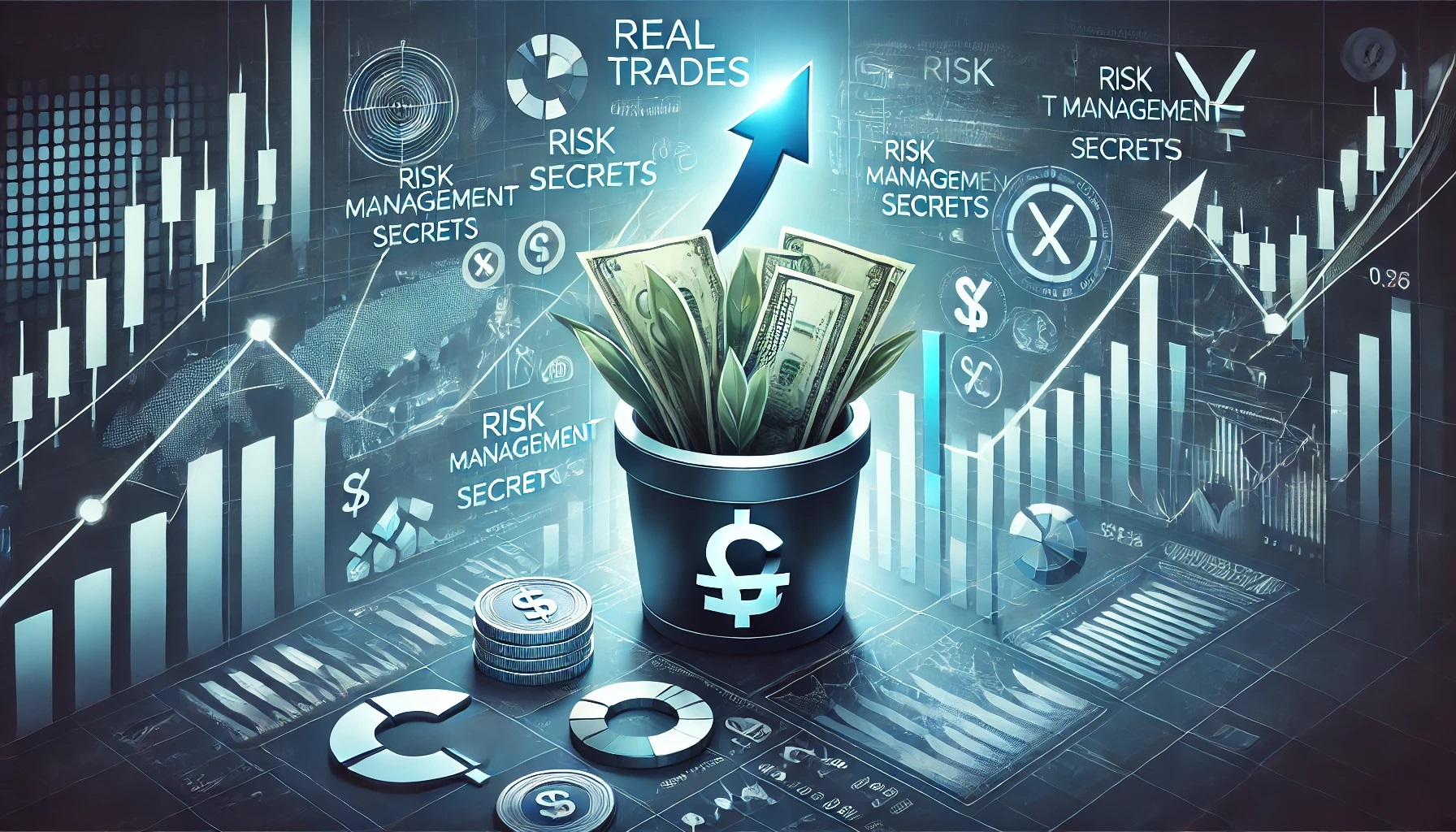The Investor Diary Entry #67: January 11, 2025
Forex trading can feel like cracking a complicated code. It’s not just about predicting future currency moves, but understanding the game I am in. Think of the Forex market as a giant, fluid puzzle where each piece affects the other in complex ways.
One of the biggest myths in trading is that I need to win every time to be profitable, but anybody who’s been in the market knows that’s just not true. The key lies in solid risk management. Imagine a safety net—by limiting my risks to a small percentage of my capital per trade, I give myself a longer rope to stay in the game.
Then there’s the matter of blending different tools to make sense of that massive puzzle. Have you ever tried putting together a jigsaw puzzle without looking at the picture on the box? That’s what it’s like trading without analysis tools. Volume zones, pivot points, Fibonacci retracements, etc. — these aren’t just jargon to confuse newbies. They are the X-ray vision that helps me see the market’s bone structure.
Technical analysis is my trusty sidekick in all this. It doesn’t have to mean wallowing in charts and graphs. Instead, it’s about spotting patterns and understanding the forces in play. With this approach, I am not just reacting to the market, but actively anticipating its moves.
Analyzing Real Trades: An Insider’s View
Taking a peek behind the curtain of actual trades offers a wealth of learning. On January 8, 2025, I flexed my Forex muscles with the EUR/USD, GBP/USD, and USD/JPY. These trades weren’t about hitting the jackpot every time but managing losses and securing wins.
Here is the a video that will show you everything in detail:
Starting with EUR/USD—it was clear the downturn was the game plan. I wasn’t just looking at falling prices; I focused on confluence where various indicators aligned. Trendlines broken, pivots crossed. It’s like spotting signs that shouts ‘short-sell now!’ And with a swift decision, I locked in a win.
Then came the GBP/USD. Sometimes the best trade is no trade. The setup seemed perfect, yet when it didn’t retest the resistance level I had been eyeing, I scrapped the idea. Waiting for confirmation saved me from rushing into what could have been a mess.
Finally, my USD/JPY trade showed me the value of a stop-loss. The trade was set to ride an upward trend hoping the support would hold. But it didn’t. I placed a safety net knowing that sometimes, losing a little is better than losing a lot.
At the end of the day, I came out on top. One win, one lost setup, and one stop-loss. These trades taught me that real-world trading is as much about subtlety and patience as it is about strategy.
Critical Risk Management Secrets for Traders
Risk management is like having your own fail-safe plan in place. Instead of chasing that elusive 100% win rate, protecting your capital should be the main game. That’s where the trusty 1% rule steps in—never risk more than 1% of your account per trade. I say this to myself, and this is how I play the game.
Crafting the right risk-to-reward ratio can be your golden ticket. Imagine risking a dollar to earn a couple more, and ensuring that even if you lose, one good trade can pull you back in the green. It’s all about being strategic with the numbers.
Having a solid exit plan is crucial. Setting up a stop-loss isn’t admitting defeat; it’s making sure the day’s not wrecked by one bad call. It’s like a safety buffer that helps keep emotions in check and decisions smart.
Consistency matters when aiming for long-term growth. This means sticking to your loss limits and understanding that some days, breaking even is a win. Practicing disciplined risk management can turn your trading journey into a marathon, not a sprint.
The Power of Confluence: Tools for Successful Trades

In the world of Forex, spotting a good trade means finding the perfect overlap in data—a confluence. This concept involves using multiple indicators like volume zones, pivot points, and Fibonacci retracements to spot high-probability trading setups.
Volume zones can show where there’s a strong buying or selling interest. It’s like knowing where the market party happens and deciding if you want to join in. Combine this with pivot points that act like magical guideposts saying, \\Stop here—important level ahead,\
and you’re onto something powerful.
Fibonacci retracements help identify possible levels where the market might turn. It’s almost like spotting footprints in a field, revealing where the big players could likely step in to buy or sell.
But it’s not just about collecting tools. Knowing when their signals line up increases your trade accuracy. It’s like putting together pieces of different maps to guide you to hidden treasure. When tools confirm each other, that’s your cue to engage confidently.
The longer you apply a disciplined confluence strategy, the more you will see your account spark growth. Being consistent with these methods ties everything together and gives you a clearer view of the path forward in Forex trading.
The Investor
Saturday 11 January 2025
About The Author
I started to look into individual stocks in January 2022. I created this diary initially for myself to track my investing progress, and second, as a place where I can share my ideas publicly hoping that others will share their ideas and learn from each other, and lastly as an online business where some links that I share are affiliate links, and if anybody bought anything by clicking those links, I will get a commission based on that successful sale, which of course will not affect the price that you are buying the product or service at.
For more detailed information on my affiliate disclosure please refer to the Full Affiliate Disclosure page.
Furthermore, this site is in no way or form giving any financial or investing advice, nor it is encouraging or discouraging people to buy or sell any financial instrument. This is a personal diary in which I track my own progress and share it for informational, educational, and entertainment purposes.


I have not personally tried forex trading but have a general understanding of it with my accounting background. Your site, where you share your experience is very interesting and valuable to others in the same game.
Technology nowadays, including AI (I assume), must be very beneficial for what you do! It sounds like you have a well thought out and sensible strategy. As you say, it’s a marathon, and you need to be in it for the long run to see the growth.
I like the way you have a safety net for minimizing losses. I have personally seen people get into big trouble by not managing their losses.
Thanks for sharing your experience.
The trading world is a very tricky one. Generally people tend to study a business idea when the costs of entry are high, but when the cost of entry is low people tend to do and expect strange things. Whether it is trading or similarly online business, people tend to expect to throw the dice and become llrich the following week, and that is if they were patient.
Although I entered the world of Forex trading back in 2006, but I cannot say that I have gained experience then. Only, within the past two years I decided to create a learning plan for myself including the ability to devise a trading methodology based on a previously set strategy and risk management rules.
Two years of learning, and I am still using my training wheels. I am still using a demo account, and until I reach certain KPIs that I have set for myself, I will keep those training wheels on.
An online business or Forex Trading is a business like any other business. If one is not experienced in the industry then one needs to learn before expecting any success. The low entry barrier should be used as an advantage, not become a disadvantage and reason to lose our money.
Thank you very much for your comment.
Hello,
Your insights on Forex trading are spot on! The analogy of the Forex market as a giant, fluid puzzle resonates deeply. I remember when I first started trading, it felt like trying to solve a complex riddle without all the pieces. The importance of solid risk management cannot be overstated. I learned this the hard way during my early days in trading. By limiting my risks to a small percentage of my capital per trade, I managed to stay in the game longer and eventually saw consistent growth.
Your emphasis on blending different tools to make sense of the market is crucial. I found that using volume zones, pivot points, and Fibonacci retracements provided a clearer picture of market movements. It’s like having a roadmap that guides you through the complexities of trading.
Technical analysis has indeed been my trusty sidekick. Spotting patterns and understanding market forces allowed me to anticipate moves rather than just react to them. This proactive approach made a significant difference in my trading strategy.
Thank you for sharing your experiences and insights. They are incredibly valuable for anyone navigating the Forex market.
Kind regards,
Jay
Thank you Jay,
Yes, you are right, my strategy is to depend on multiple confirmations before making a move. Still, the disadvantage that I am facing is that each currency pair is taking me a lot of time to analyze.
I am able to analyze a max of three pairs per day, I hope that by time, I will be able to become faster.
Thanks a lot.
This was interesting but I have to say that I have always been a bit afraid of getting into forex. Maybe it is just the way people talk about it, like it is some high risk gamble where only the pros get to survive.
Reading this has made me think that there is a lot more structure to it than I assumed. The way you go into the actual trades and risk management steps kind of helps put things into perspective for me a little more.
One thing I want to ask you is, do you think risk management is the biggest factor in staying profitable in the long run, or is there something else that makes the real difference?
I appreciate the info here, definitely food for thought.
Thanks, and look forward to hearing back from you.
Chris
I believe that a risk management plan is priority number one, the second step is to find a trading methodology that fits your style and circumstances.
If a trader has those two, then I believe that we have gone a long way, and we can consider that a trader has established a system that he/she can rely on for the long run. I also believe that this way, a trader has a business.